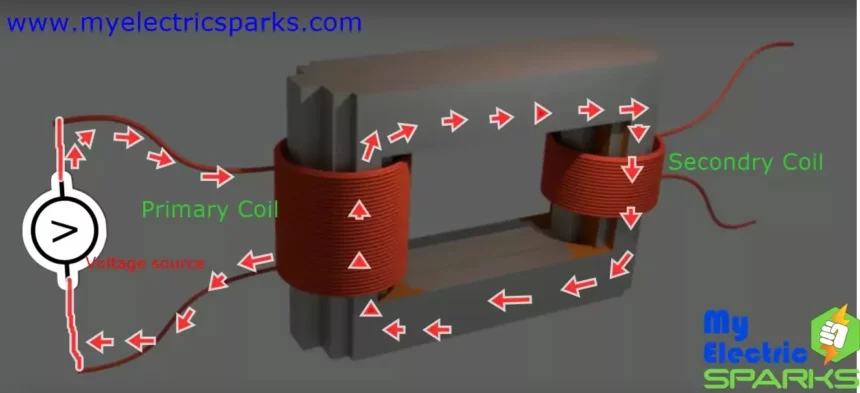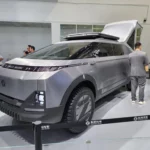Transformers may seem simple, but they are essential in our everyday lives. Transformers transfer electrical power from one circuit to another from the power station to your home while maintaining the input side’s frequency.
What are Transformers?
Derived from the words “transfer” and “form,” transformers are static machines used to decrease or increase the voltage of an electrical supply. They are commonly found in power stations, allowing electricity to be transmitted over long distances with minimal power loss. In our homes, they are found in everyday appliances like phone chargers and laptops.
The Advantages of Transformers
One of the most significant advantages of transformers is that they maintain the frequency of the input side, which means that the output frequency remains the same. This is critical in industries that rely on a steady flow of electricity, such as healthcare and manufacturing. Transformers also operate without any moving parts, making them durable and reliable.
New Developments in Transformer Technology
Over the years, there have been significant developments in transformer technology. In 2023, a new type of transformer was introduced – the digital transformer. This innovative technology uses sensors to monitor the flow of electricity, providing real-time data on power usage and potential faults. TechReview.com states that digital transformers could revolutionize the energy industry, allowing for more efficient and sustainable energy distribution.
Transformers may seem like simple machines, but they play a vital role in our daily lives. Transformers have come a long way since their inception, from powering homes to sustaining industries. With new technologies like digital transformers on the horizon, the future of energy distribution looks bright.
Understanding the Parts and Minimizing Losses
Transformers are fascinating machines with two essential parts – the windings and the metallic core. But how do these parts work together, and how can we minimize losses to improve efficiency? Let’s take a closer look.
The Metallic Core
The metallic core provides a path for flux, ensuring maximum change passes through it. However, two types of losses occur – hysteresis losses and eddy current losses. These losses are collectively known as magnetic or iron losses. To minimize these losses, we need to construct the core in a way that minimizes magnetic losses.
Reducing Hysteresis Losses
One way to reduce hysteresis losses is by using high-grade silicon steel, which has high permeability. This material minimizes hysteresis losses and ensures that the transformer operates efficiently.
Reducing Eddy Current Losses
Eddy current losses can be reduced by constructing the core using thin laminations of around 0.5 or 0.5mm, which reduces eddy current. These laminations are isolated from each other by varnish, minimizing eddy current losses.
Windings or Coils
The windings or coils carry the electric current, and copper is used due to its low resistivity. The windings are isolated and subjected to I^2R losses, also known as copper losses.
Transformers: Types and Arrangements
Transformers are divided into two main types – step-up transformers and step-down transformers. Step-up transformers increase the voltage, while step-down transformers decrease the voltage. Transformers can also be arranged in different ways, such as single-phase and three-phase transformers.
Transformer Accessories: What They Are and Why They Matter
Transformers are critical components of the electrical grid but are not immune to faults and failures. That’s why transformer accessories are essential. These accessories protect the transformer from various factors that could cause damage or loss. Here’s an overview of some of the most critical transformer accessories and their functions.
- Tank: The tank is a critical accessory that protects the core and windings while accommodating oil for cooling and insulation. Small transformers typically use sheet steel, while large transformers use boilerplates.
- Tubes: Cooling tubes or radiators are essential for keeping transformers cool and preventing overheating.
- Conservator: As the transformer generates heat, the oil expands, increasing volume. This creates a need for additional space. A small tank, called a conservator, is connected to the main tank to provide extra space.
- Oil Level Indicators: These are used to monitor the oil level in the conservator and ensure that the transformer is functioning correctly.
- Buchholz Relay: The Buchholz relay is a gas operator relay that plays a crucial role in identifying faults in the transformer. It consists of a cylindrical chamber between the transformer tank and conservator, with two floats made of aluminium. A mercury switch is kept with the cork. When a fault occurs, gas is produced in the oil, accumulating at the top of the relay. This reduces the oil level, causing the top float to come down, which shorts the contacts. This triggers the auxiliary relay, which sounds an alarm in the control room, allowing the operator to take corrective action. If a significant fault occurs, the lower float goes up, causing the mercury switch to become horizontal, shorting the contacts in the tube. This activates the trip coil of the circuit breaker, disconnecting the transformer from the system.
- Breather and Silica Gel: Breathers ensure that the air entering the conservator is dry, which helps maintain the oil’s dielectric strength. Silica gel is placed inside the breather to absorb moisture from the incoming air. When the silica gel is saturated with water, it changes colour from blue to pink, indicating the need for replacement.
- Explosion Vent: The explosion vent is an essential safety accessory that helps prevent explosions in the transformer. It allows gases and oil to escape from the transformer in case of a fault or spark.
- Thermometer: Thermometers are used to measure the temperature of the transformer. The thermometer pocket is provided to accommodate the thermometer.
- Bushing: Bushings provide insulating support for the HT wire, which connects to the transformer tank. Different types of bushings are used depending on the voltage level.
- Drain Cock: Drain cocks remove oil and waste extricate from the transformer. It is located at the bottom of the tank.
- Rail and Wheel: The rail and wheel transport the transformer from one location to another.
Transformer accessories are crucial in ensuring the transformers’ proper functioning and longevity. According to tech website reviews, transformer accessories are indispensable, and their importance cannot be overstated.
A reviewer from Tech Guru puts it, “Without proper accessories, transformers are like sitting ducks, waiting for the next fault or failure.”
Understanding How Transformers Work
Have you ever wondered how transformers work and what mutual induction is? Let’s dive into the world of electrical engineering to find out!
What is Mutual Induction?
The Transformer operates on mutual induction, a phenomenon where two coils that are not physically connected can still influence each other’s magnetic fields. A magnetic flux is produced when voltage is applied to one coil, the primary coil. This flux creates poles, a North pole and a South pole.
Waves are generated from the North pole, which is electrical lines of force that move towards the South bar, creating a magnet. This magnetic field then links back to the North bar, generating an Electromotive force (EMF). This process is known as self-induction.
However, when another coil is placed near the first coil, the magnetic flux generated from the first coil links with the second coil. This phenomenon is called mutual induction, and if an EMF is generated in the dual coil due to the first coil, it is known as mutual induction.
How Transformers Work
In a transformer, there are two primary and secondary coils. When voltage is applied to the primary coil, mutual induction generates an EMF in the secondary coil. The voltage induced in the secondary coil is directly proportional to the number of turns in the secondary coil.
Real-World Applications of Transformers
Transformers are an essential component in the electrical power grid system. They are used to step up or down the voltage of the electric current in the transmission lines. This allows the electric current to be efficiently transmitted over long distances.
Transformers are also used in power adapters for electronic devices such as laptops, smartphones, and other household appliances. They help to convert the high voltage from the wall socket to a lower voltage that the electronic device can safely use.
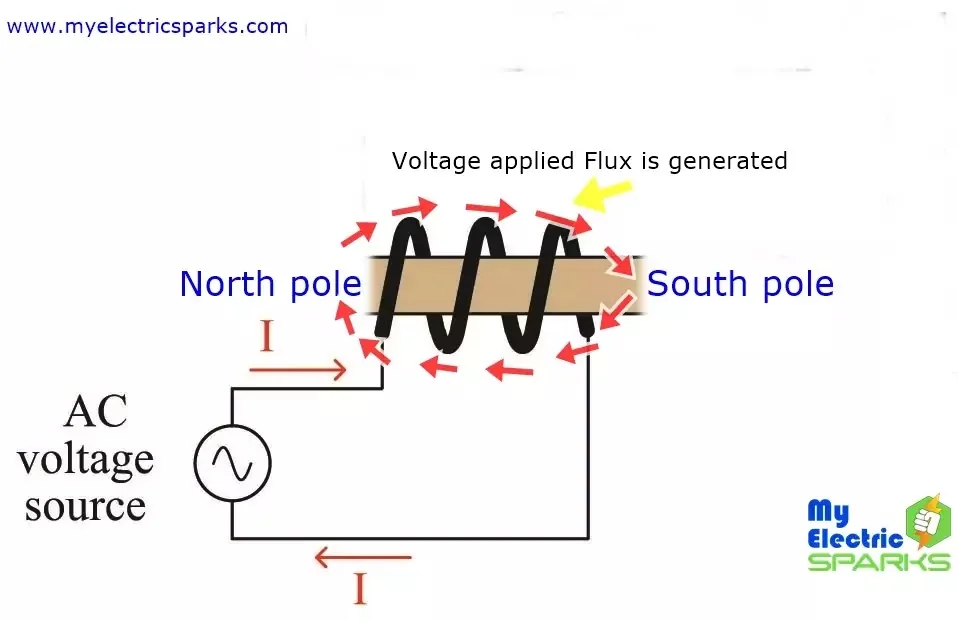
Updates from 2023
With the rapid advancement of technology, there have been significant improvements in the efficiency of transformers. Companies are now developing intelligent transformers that can monitor the voltage and current in real-time and adjust the voltage levels automatically.
“The development of smart transformers has revolutionized the power grid system by significantly reducing power losses during transmission.”
“The use of transformers has made it possible to transmit electricity over long distances, which has been a game-changer in the field of electrical engineering.”
Transformers and mutual induction are vital in electrical engineering. With the development of intelligent transformers, we can expect even more efficient and reliable power transmission in the future.

Types
-
-
- Step-up transformer
- Step-down Transformer
- Power transformer
-
Step-Up Transformers: Boosting Voltage for Long-Distance
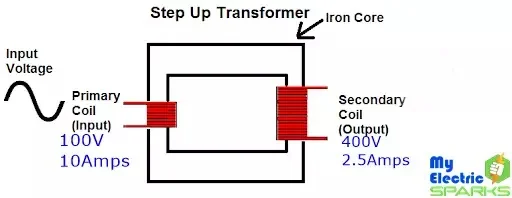
For instance, when power is generated in a power station, it must be transmitted to various cities and towns. The electricity generated is usually at a lower voltage, say 11kV, which is inefficient for long-distance transmission. A step-up transformer increases the voltage to a much higher level, such as 400kV, for efficient long-distance transmission.
Step-Down Transformers: Decreasing Voltage for Domestic Use
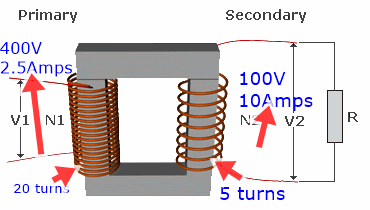
For instance, if the electricity grid supplies electricity at 220V, but your appliance requires only 110V, you will need a step-down transformer to reduce the voltage to a safe level for the device.
Power Transformers:
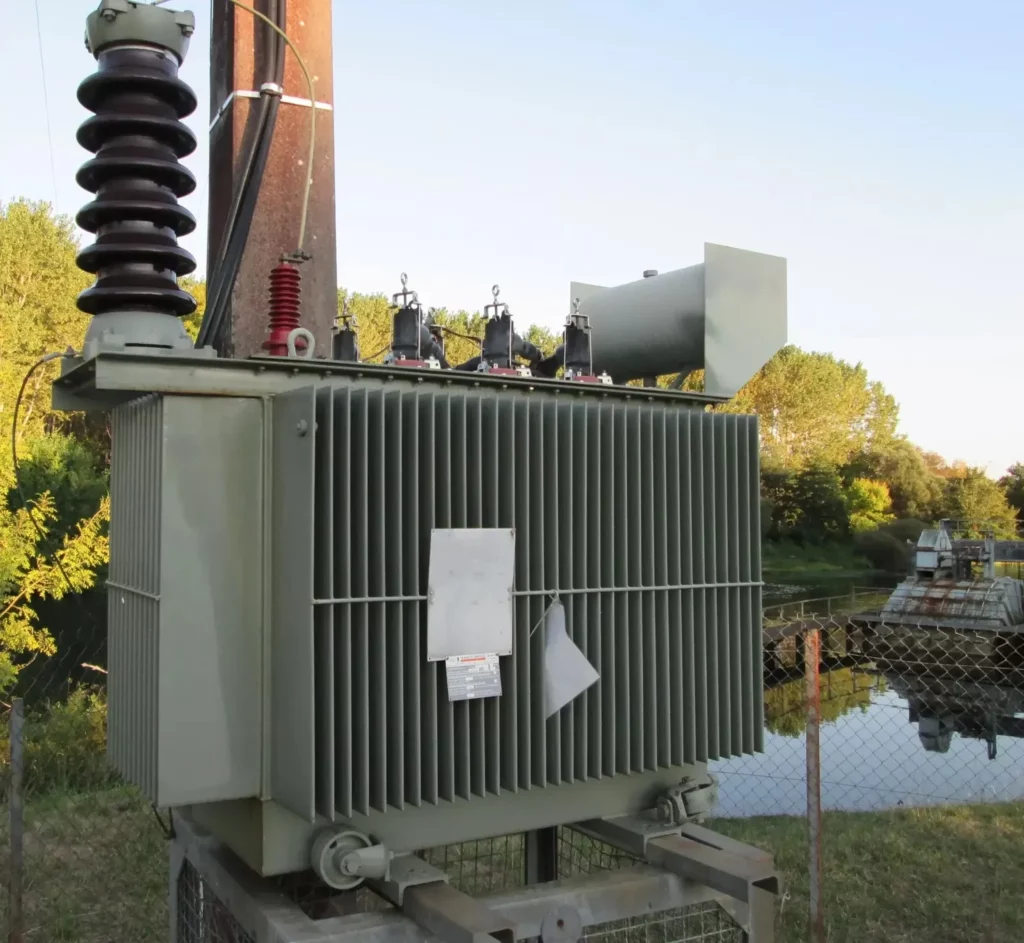
Distribution transformers are responsible for delivering power to our homes. They play a crucial role in reducing the electricity voltage to a safe level for household use. With them, the power we receive at home would be too high and could be safe.
On the other hand, distribution transformers have lower ratings like 11KV, 6.6KV, and 230V. The power that comes to our homes is due to the distribution transformer, which is a step-down transformer. In simple terms, these transformers reduce the voltage level of the power supply to make it safe and suitable for use in households and businesses.
ABB’s transformers are known for their efficiency and reliability. The company’s transformers are designed to handle high-stress levels and are built to last.
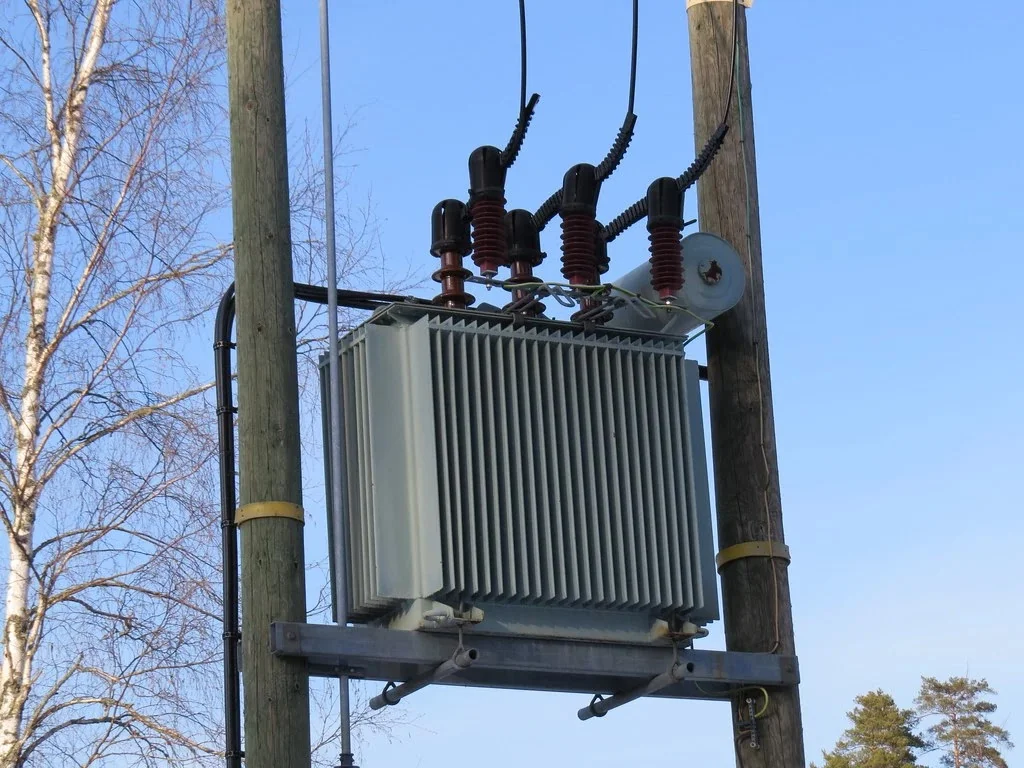
Understanding the Formula for Transformers
Transformers are an essential electrical system component, and understanding their working and calculations is crucial. In this section, we will discuss the formulas used in transformers and how to calculate their efficiency.
Calculating the Efficiency of Transformers
Efficiency is an essential factor when it comes to transformers. It determines how well a transformer is performing in terms of energy conversion. The formula to calculate the efficiency of a transformer is as follows:
Efficiency (%) = (Output Power / Input Power) x 100
Output Power is the power delivered to the load, and Input Power is the power supplied to the transformer.
Equations of Transformers
There are several equations used in transformers that help in determining different parameters. Some of the essential equations are:
- Transformer Turn Ratio Equation:
Turns ratio (N) = Number of turns on the secondary coil (Ns) / Number of turns on the primary coil (Np)

- Transformer Voltage Equation:
Vs / Vp = Ns / Np
Vs. is the voltage on the secondary coil, and Vp is the voltage on the primary coil.
- Transformer Current Equation:
Is / Ip = Np / Ns

Where Is is current on the secondary coil, and Ip is on the primary coil.
- Transformer Power Equation:
Ps = Vs. x Is
Ps is the output power, Vs. is the secondary coil voltage, and Is the secondary coil current.
These equations help determine the transformer’s different parameters, such as voltage, current, turn ratio, and power.
USES OF TRANSFORMER
The transformer has its significance. In the current field, according to the necessity and application of transformers, it has the following uses as ven below;
Application
The most significant uses and use of Transformers are:
- It can increase or decrease the degree level of Voltage or Current (when voltage builds, current declines, and bad habit versa because P =V x I, and power is the same ) in an AC Circuit.
- It can increment or decrease the capacitor’s estimation, an inductor, or opposition in an AC circuit. It would be able to go through an impedance-moving gadget.
- It can keep DC from going from one circuit to the other.
- It can segregate two circuits electrically.
- The transformer is the primary motivation to transmit and disseminate power in AC rather than DC since the transformer is not chipped at DC, so there are two challenges to sharing power in DC. In the DC Transition, the degree of voltage Steps up by Buck and Boost Converter.
- The fundamental use of the transformer is to Step up ( Increase) or Stepdown (Decrease) the voltage.
- Increase or decrease the degree of current while power must be the same.
Different Uses :
- Some transformers work as step up or step down; if it is step up, it steps up the voltage before transmission.
- On the appropriation side, for business or residential power utilization, the transformer steps down (decreases) the degree of the voltage of 11kV to 220 V single-stage and 440 V three-stage.
- The Current Transformer and Potential Transformer are likewise used to force framework and in the business. Additionally, it is used for impedance matching.
- So these were the straightforward uses and use of a transformer.
Things To Remember
Ten transformer safety practices for electricians and industrial professionals
The importance of proactive inspections in the safety of electrical transformers
Using industrial equipment that generates large voltages lapse in handling electrical transformers could cause costly equipment malfunctions and even deaths. This is the reason that the inspection of electrical transformers is crucial. Regular inspections and maintenance can detect potential issues early and avoid future problems.
Electrical transformers should be inspected for damaged connectors, worn-out power cords, smells of burning and lost plugs, and malfunctioning parts to avoid malfunctions and fire dangers. The maintenance team must pay close attention to the ISO 9001 requirements and UL CUL, UL VDE, and CE standards to ensure a safe work environment for the equipment and electricians.
These safety tips for transformers apply to any transformer regardless of its maker or the manufacturer:
1. Inspect the electrical transformer before installation for any burnt smell, damaged parts, or irregularities in the continuity.
2. All maintenance work should only be done when the equipment has been disconnected and removed from the circuit before the system has been closed.
This is essential to ensure there isn’t any electrical current leakage or continuity between the electrical current of the horse and the circuit.
3. The maintenance staff should be equipped with personal protective equipment specifically designed to protect the workers when working on electrical transformers that produce high voltage.
4. Any modifications should not be made to electrical transformers that require over-current protection. Over-current protection mechanisms in circuits and conductors should be adjusted to meet the manufacturer’s standards.
5. The transformer’s grounding must be maintained at all times. It stops the build-up of static charges and keeps the windings safe from contacting the enclosures or core.
6. The transformer should be checked frequently for bolts, nuts or spare parts that have gotten into the.
7. The electrical transformer and its components must be kept dry throughout the day since every contact may cause harm.
8. A sign-in sheet should be posted close to the electrical transformer, warning that people should stay clear of it to avoid workplace hazards.
9. Anyone working with the transformer’s electrical components must know the voltages used to power it.
10. If an anomaly or irregularity is noticed in the working of the transformer’s electrical circuit, it should be turned off. All cables and power cords need to be removed before determining the part of the transformer that has been not working correctly.
Electrical transformers are robust devices and a vital energy source for every industry operating with the help of electricity. Still, there are many hazards associated with this machine.
It is crucial to follow all necessary safety precautions to avoid any equipment destruction, electrical fire, or death and ensure that the operations are running smoothly at all times. (Source)

